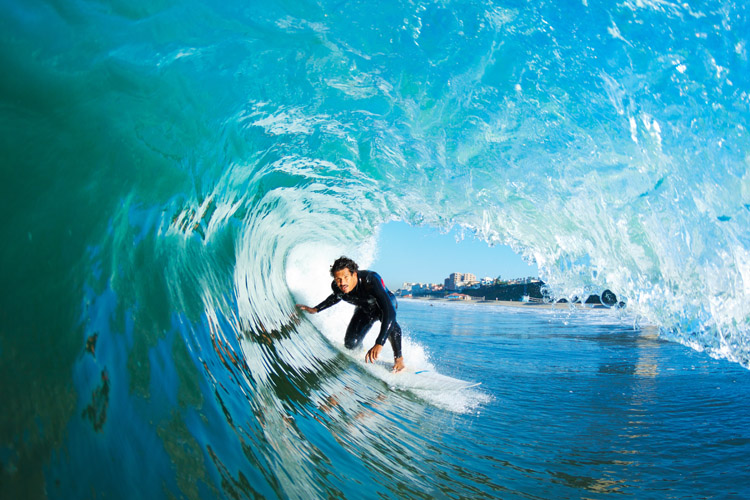Getting barreled is not only the ultimate surfing maneuver and a near-religious experience, but it is also a difficult thing to do.
However, the good news is that, on many occasions, the first tube ride is always the hardest.
For various reasons, the vast majority of intermediate and even advanced surfers have not yet found themselves fully covered by a falling wave lip.
Reality is cruel, and perfect barreling waves are not always at arm's length. Sometimes, the waves are too small or choppy; other times, it's closing out and onshore.
Years go by, and we never seem to find the ideal conditions for getting pitted. Sad, isn't it?
The truth is that you don't need much to perform surfing's definitive trick on a wave. All you need is to know how to read a wave, pop up fast, do a good bottom turn, and trim a wave.
There are two ways of getting shacked: either you backdoor the barrel, slowing down and stalling into it, or dropping straight into the pit.
Then, it's all about enjoying the view and maximizing your tube time.
If you can do that, you will, sooner or later, get barreled for the first time in your surfing life. Here's how you can speed up that magic moment:
1. Pull Into Closeout Waves
It's never good to take a beating, but getting pounded by a closeout wave is part of the process of getting slotted. We could say it is an introduction to barrel riding.
The good thing about guillotine waves is that they will allow you to train the body gesture that gets you inside the cylinder.
If you're afraid of hurting yourself or breaking your favorite surfboard, grab a bodyboard and pull into a few small and medium-sized barrels.
With some luck, you may find the doggy door and thus celebrate your first tube ride.

2. Practice on Small, Hollow, and Long Waves
Who said you need overhead waves to get barreled? Depending on your height, sometimes all you need is a waist-to-chest-high roller to live the dream.
So if the conditions are small yet perfect, try to paddle waves with steeper shoulders. Some surfers find it easier to get barreled on their backhand because their bodies are lower and need less space inside the tube.
Whatever you prefer, make sure to adopt a low stance in small wave conditions.
3. Positioning is Everything
No matter how big the waves are, if you want to get your first barrel, you need to fine-tune the position in the peak.
So, before paddling out, study the breaking of the waves and identify the best place to be. Pinpoint the exact area where the barrel is opening, and get yourself in the zone.
To save a visual image of the take-off area in your head, do the proper triangulation.
4. Focus on Stalling and Pumping
Stalling and pumping are two useful techniques that will help you get more barrels.
Why? It's quite simple. Stalling your surfboard - and eventually the single and double-hand drag - will allow you to reduce speed after a bottom turn and, who knows, end up getting covered by the wave.
Pumping is precisely the opposite of stalling. It will accelerate your board if you need extra speed to exit the barrel.
Combining these two skills on average waves may lead to unexpected tube time.
5. Surf a Wave Pool
Are you having trouble getting barreled in your home break? Head to your nearest artificial surf pool or stationary wave system and practice your barrel riding skills in a controlled environment.
If you still struggle to get shacked, ask for advice or book a few advanced surf lessons. Experienced surfers will know how to guide you in the right direction.
Finally, remember that once you take off on a good-looking wave, commit to it, draw a fine line, and keep your eyes open. The barrel will open itself to you, and everything will look effortless.
Macaronis (Mentawai Islands), Cokes (Maldives), Lagundri Nay (Nias), and Bingin (Bali) are some of the easiest surf spots in the world for getting barreled.
